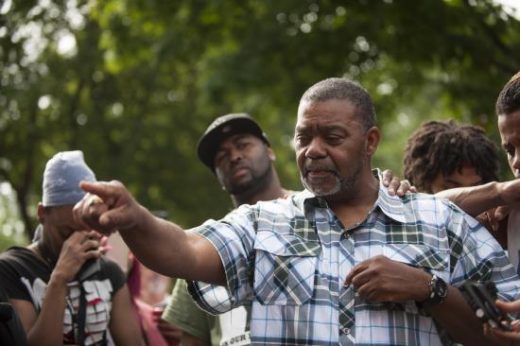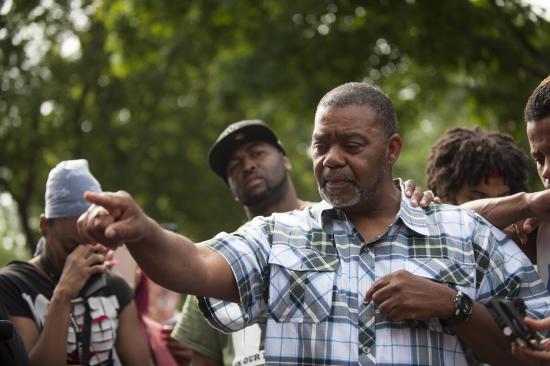There’s a Test That May Reveal Racial Bias in Police—and in All of Us
There’s a Test That May Reveal Racial Bias in Police—and in All of Us

Perhaps the only thing worse than being in the presence of racism is discovering that—despite your high opinion of your self—you might be guilty of it. None of us can peer into the heart and mind of the St. Paul, Minn., police officer who shot Philandro Castile to death through the window of his car on July 6.
No one, similarly, can know the thoughts of the officer who killed Alton Sterling in Baton Rouge, La. the day before—or the ones who murdered Tamir Rice and Michael Brown and Dontre Hamilton and Walter Scott and Freddie Gray, and all of the other young men who have lost their lives in our national spate of such deaths.
Still, it would beggar reason to suggest that there is not a racial element to all of this. “Would this have happened if those passengers, the driver were white?” asked Minnesota Governor Mark Dayton, after the St. Paul shooting. “I don’t think it would have. All of us in Minnesota are forced to confront that this kind of racism exists.”
All of us everywhere else, too. Racial bias—even if not racial animus—is present in everybody. The human brain, as psychologist Joshua Correll of the University of Colorado, Boulder, puts it, is a “meaning-making machine,” forever sorting things into categories—good and bad, safe and unsafe, happy and sad—often on the fly. Survival depended on being able to make those distinctions fast.
In 1998, psychologists Mahzarin Banaji of Harvard; Anthony Greenwald, of the University of Washington; and Brian Nosek of the University of Virginia created what’s known as the Implicit Association Test (IAT) designed to reveal different kinds of biases—gender, race, body type and more. (You can take the test here, by first clicking a disclaimer page and selecting the race test.) The IAT, as its full name suggests, is not concerned with any conscious prejudices you may or may not hold. It’s concerned more with the ones you’re unaware of, the automatic, reflexive judgments you make all the time.
In its most basic form, the IAT flashes a random series of black and white, male and female faces. In one part of the test you’re asked to click keys to associate negative terms like hurt, evil, agony and failure with the black faces and positive terms like love, joy, peace and happy with the white ones. In the other part, the qualities are switched, with the black faces getting the good terms and the white faces the bad ones.
With depressing frequency, the majority of subjects make the black-equals-bad and white-equals-good associations more accurately and more quickly than the other way around. In one 2014 compilation of 1.55 million IAT subjects, the average scores of white Americans placed them just above the cutoff point that separates “slightly prefer whites” from “moderately prefer whites.”
Greenwald stresses that those subjects are by definition a self-selected community, people who are concerned enough to want to know more about their hidden biases and motivated enough to go find out. “For some people, this is a way to learn about their implicit associations so they can curb them,” he says. Others—the folks content to accept or, in the worst cases, embrace their biases—are unlikely ever to find the way to the test.
Exactly what curbing implicit prejudices would entail is uncertain. Greenwald does not think we can ever extinguish our implicit associations, though in a culture in which education, opportunity and wealth weren’t so closely linked to the random spin of the skin-color wheel, our biases would be less acute. The best we can do is be more mindful of them. “If you’re conscious of your biases, you can find ways to prevent them from intruding on your actions,” he says.
For police officers, more must be done. Psychologist Jack Glaser, a professor of public policy at the University of California, Berkeley and an expert on police decision-making, believes better preparation for policing multi-racial neighborhoods is a critical part. For one thing, officers can be more rigorously trained to step back and look for valid indicators of probable cause—more than race, certainly, and more than minor offenses like a busted tail light, which may be a perfectly good reason for a stop in some cases but not in others.
More important—and more pressing—is curbing the use of official force when situations escalate. For this, Glaser and others suggest what is called a “time and distance strategy,” that can help experts learn from tragedies like the St. Louis killing. “If you look at this not as an execution but instead as a mix of confusion, fear and racial stereotyping,” he says, “you can determine what kinds of protocols and training can be put in place to prevent this kind of thing in the future.”
That’s little comfort to the grieving families of the growing list of victims—and no good at all to the young men who have been lost. But it at least might help us understand how we came to such tragedy.
(20)



